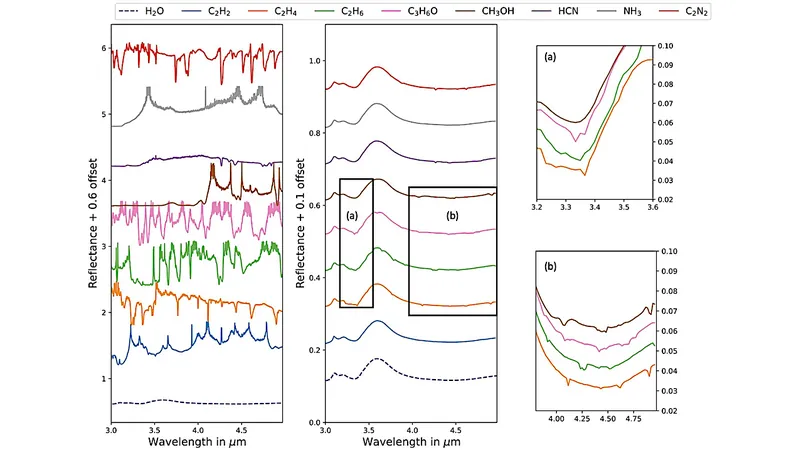
Cracking the Code of Europa: Will NASA's Europa Clipper Find Life?
2025-06-03
Author: Mei
Are There Organics on Europa?
The icy moon of Jupiter, Europa, has long fascinated scientists searching for signs of life beyond Earth. If organic compounds exist on its surface, they might be present only in minute quantities. Enter NASA’s Europa Clipper mission, poised to unveil critical data about this enigmatic moon.
High-Tech Investigations Await!
The Europa Clipper is set to revolutionize our understanding by using advanced infrared spectroscopy, zooming in on the 3-5 micron wavelength region where organics are teeming with unique spectroscopic signatures. This technology will allow scientists to meticulously analyze the chemical composition of Europa's surface.
Diving Deep: Tracking Trace Organics!
Exciting research is underway to assess how effectively the Europa Clipper can identify trace organic species—essentially the building blocks of life. These compounds, which include various carbon-bond structures, might be mixed with water ice on Europa’s surface. By simulating different scenarios, researchers have ingeniously modeled how these organic traces might appear in spectroscopic data.
Two-Pronged Approach to Discovery!
To uncover the presence of these organics, experts are employing two innovative techniques: measuring the intensity of absorption features and conducting Bayesian model comparison (BMC) analysis. Their findings reveal that specific organic molecules, present even at low levels of about 5%, could be detected with remarkable certainty using Europa Clipper's high-quality data.
BMC Analysis: Lowering Detection Thresholds!
What’s even more thrilling? The BMC analysis suggests that the detection limits for these trace organics could be lowered to less than 1% abundance. Even when multiple organic species with overlapping signatures are combined, the BMC technique shows promise in discerning and estimating their concentrations.
Hope for Understanding Europa’s Secrets!
These groundbreaking results ignite hope that Europa Clipper will indeed uncover trace organic materials. Such discoveries would not only illuminate the moon's composition but also allow scientists to draw fascinating connections to its geological regions, potentially hinting at endogenic processes that could support life.
Who Are the Visionaries Behind This Research?
This remarkable work is spearheaded by an adept team of researchers, including Ishan Mishra, Nikole Lewis, Jonathan Lunine, and Kevin P. Hand, who are pushing the boundaries of our understanding of Europa. With the Europa Clipper mission set to launch soon, the scientific community waits with bated breath for what could be a monumental leap in astrobiology.

 Brasil (PT)
Brasil (PT)
 Canada (EN)
Canada (EN)
 Chile (ES)
Chile (ES)
 Česko (CS)
Česko (CS)
 대한민국 (KO)
대한민국 (KO)
 España (ES)
España (ES)
 France (FR)
France (FR)
 Hong Kong (EN)
Hong Kong (EN)
 Italia (IT)
Italia (IT)
 日本 (JA)
日本 (JA)
 Magyarország (HU)
Magyarország (HU)
 Norge (NO)
Norge (NO)
 Polska (PL)
Polska (PL)
 Schweiz (DE)
Schweiz (DE)
 Singapore (EN)
Singapore (EN)
 Sverige (SV)
Sverige (SV)
 Suomi (FI)
Suomi (FI)
 Türkiye (TR)
Türkiye (TR)
 الإمارات العربية المتحدة (AR)
الإمارات العربية المتحدة (AR)